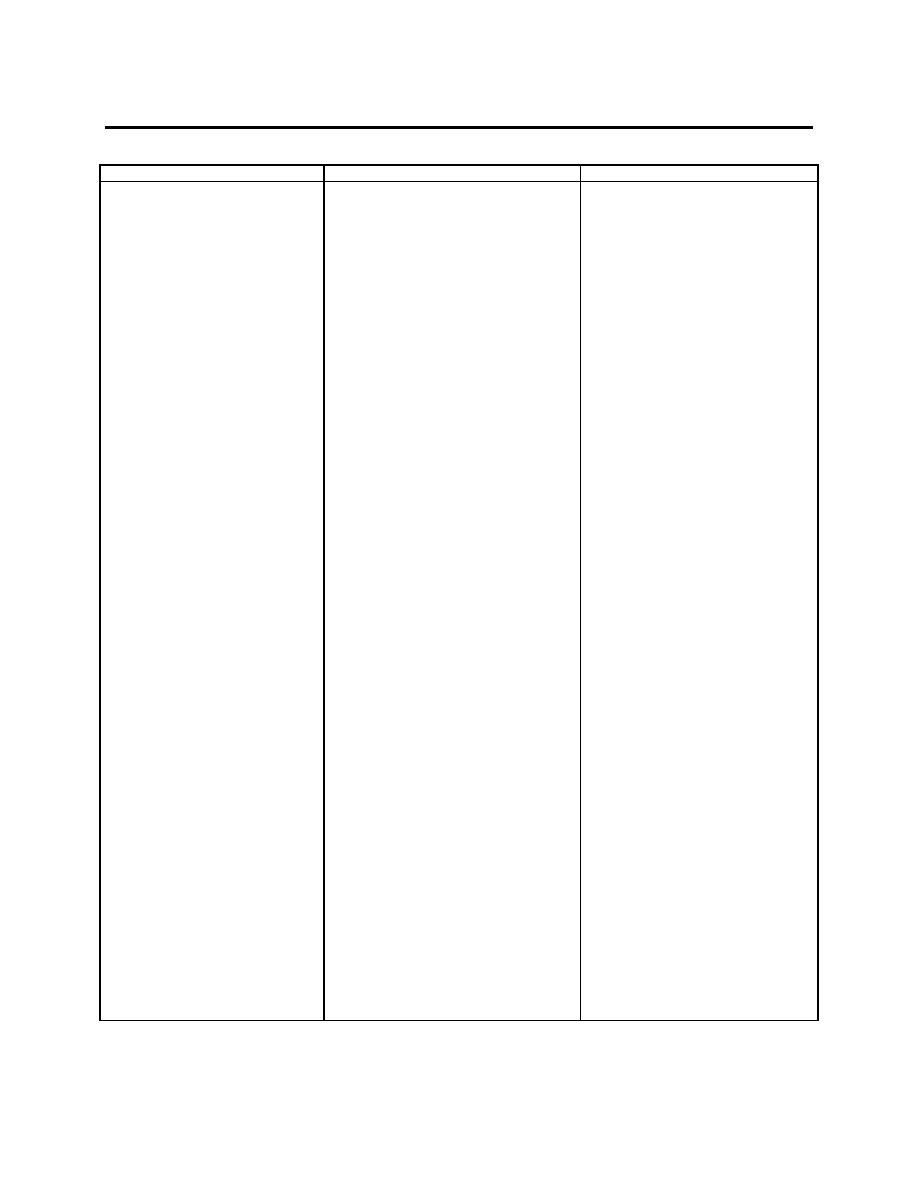
TM 9-4520-272-14&P
0016 00
Table 1. Troubleshooting Procedure for Large Capacity Field Heater (LCFH).
MALFUNCTION
TEST OR INSPECTION
CORRECTIVE ACTION
getting into the LCFH airflow.
there is no evidence of high carbon
monoxide levels, replace the
operator control panel carbon
monoxide detector.
Step 1. Repair any tears in the
55. Heater starts, shuts down,
Step 1. This fault code indicates that the
and displays fault code: H312
flexible air inlet duct with duct tape.
LCFH has detected carbon monoxide at
Replace flexible air duct if damage
the cabinet mounted carbon monoxide
cannot be completely repaired with
detector. Evacuate any personnel that
duct tape.
may be in the shelter and look for signs
of carbon monoxide poisoning. Check
the flexible air inlet duct and ensure that
it does not have any rips, tears, or other
damage that would allow combustion
exhaust to enter the inlet air flow.
Step 2. Re-attach flexible air inlet
Step 2. Check and ensure that the
duct to air inlet duct adapter lock in
flexible inlet air duct is securely
place securely.
attached to the air inlet duct adapter on
the LCFH.
Step 3. Move LCFH so that
Step 3. Ensure that the shelter opening
combustion exhaust does not enter
is not downwind of the LCFH is such a
shelter during LCFH operation.
way as to allow combustion exhaust to
enter the shelter.
Step 4. Restart LCFH. If fault
Step 4. Determine if there are any other
reoccurs, stop use of LCFH and
sources of carbon monoxide (vehicles,
notify Unit Maintenance.
generators, etc.) that may be running
nearby. Determine if the combustion
Step 5. Step 5. If problem reoccurs
exhaust from those sources may be
and there is no evidence of high
getting into the LCFH airflow.
carbon monoxide levels, replace the
cabinet mounted carbon monoxide
detector.
56. Fuel leak is observed in the
Step 1. Determine the area where the
Step 1. Shut down heater. If fuel leak
heater.
leak is originating. In all likelihood, this
has been detected in a flare titting,
will be in the area of the fuel panel
re-tighten. If fitting continues to leak,
assembly, the burner valve assembly,
inspect for dirt or debris on the flare
or the fuel tank assembly.
"male" and "female" areas and clean
if needed. If leak persists, replace
both hose and component.
Step 2. For fuel leaks in hoses using
barb fittings and screw hose clamps,
ensure that the hose is fully inserted
onto the hose barb and then re-
tighten the clamp.
Step 3. If a leak is found anywhere in
the length of the hose, replace entire
hose.
END OF WORK PACKAGE
0016 00-16

